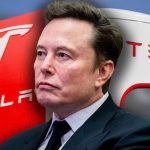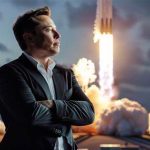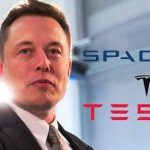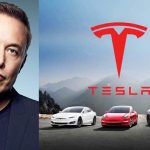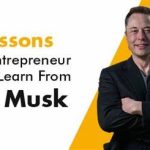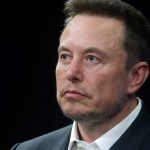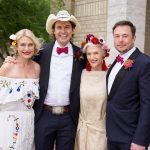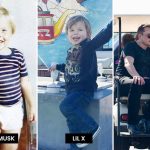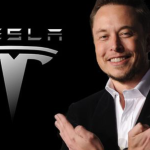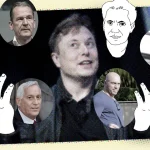Elon Musk: From Bullying Victim to Future Architect 🌍🚀
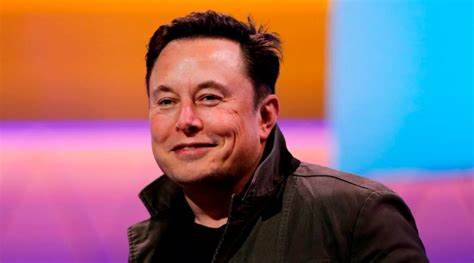
Elon Musk: From Bullying Victim to Future Architect 🌍🚀
Elon Musk—tech titan, relentless innovator, architect of humanity’s future—is a name that conjures images of electric cars zipping down highways, rockets piercing the cosmos, and brain-chips bridging minds to machines. By March 31, 2025, his empire—Tesla, SpaceX, Neuralink, The Boring Company—stands as a testament to what vision and grit can build. Yet, beneath this dazzling veneer lies a lesser-known story: a childhood shadowed by hardship, trauma, and brutal bullying. Few realize that the man now steering us toward Mars was once a vulnerable boy in South Africa, battered by peers and scarred by pain. How did he rise from that dark past to shape the world? Let’s peel back the layers of Musk’s journey—from victim to visionary—and uncover the resilience that fuels his extraordinary ascent.
A Childhood Under Siege: The Bullying Years 😔
Elon Reeve Musk was born in 1971 in Pretoria, South Africa, a city of stark contrasts—sprawling suburbs, apartheid’s iron grip, and a rugged schoolyard culture. Son of Errol, an engineer, and Maye, a model and dietitian, he grew up in a middle-class home where books were his refuge. But school was no sanctuary. From age 8 to his mid-teens, Musk endured relentless bullying that left scars—physical and emotional—that lingered long after the bruises faded.
He was an oddity—small, shy, bespectacled, with a mind that raced far beyond his peers. “I was a nerdy kid, always reading,” he told Rolling Stone in 2017. That quirkiness made him a target. Classmates mocked his accent, his awkwardness, his love for sci-fi over sports. The taunts escalated to violence. In one harrowing incident at 14, a gang of boys ambushed him at Sandton’s King David School. “They threw me down a concrete stairwell and beat me until I blacked out,” he recounted in Ashlee Vance’s 2015 biography. His face smashed, nose shattered, he landed in the hospital for a week—doctors feared permanent damage.
The assault wasn’t a one-off. Musk faced near-daily torment—punched, tripped, ostracized. “I’d hide in the library, but they’d find me,” he said on X in 2025, reflecting on those years. At 15, a decade after the worst beating, he underwent corrective nose surgery to fix breathing issues from the trauma—a stark reminder of the brutality’s lasting toll. Psychologically, the wounds cut deeper. “It left me with a sense of isolation,” he admitted in a 2021 podcast, hinting at a lingering echo of fear and alienation.
South Africa’s 1980s school culture didn’t help—toughness ruled, weakness was preyed upon. Musk’s parents, divorced when he was 9, offered little shield; his father’s harsh demeanor (Musk later called him “a terrible human” on X) compounded the strain. Yet, within this crucible, something shifted. The bullied boy didn’t break—he hardened, turning pain into a quiet, fierce resolve.

From Pain to Purpose: Forging Resilience 💪
Trauma can crush—or it can catalyze. For Musk, it was the latter. Those brutal years didn’t define his limits; they ignited his drive. Bullied for being different, he leaned into that difference—his intellect, his imagination—turning it into armor and ambition. “I had to prove I wasn’t weak,” he told 60 Minutes in 2012. That proof wasn’t revenge—it was creation, a vow to rise above and reshape the world.
At 12, while still nursing wounds, he taught himself programming on a Commodore VIC-20, coding “Blastar,” a space game he sold for $500—a fortune for a kid in 1983. It was an early win, a flicker of control amid chaos. At 17, he fled South Africa for Canada, escaping both bullies and a fractured home, with $2,000 and a suitcase. “I wanted a bigger stage,” he tweeted in 2025. That stage grew—Zip2 sold for $307 million in 1999, PayPal for $1.5 billion in 2002—each success a brick in a wall against his past.
The real test came later. In 2008, Tesla teetered on bankruptcy—production stalled, cash vanished. SpaceX’s first three Falcon 1 rockets crashed, nearly sinking his $100 million bet. “I felt like I was back in that stairwell,” he said on X this year. But he didn’t fold. He poured his fortune into both, sleeping on Tesla’s factory floor, rallying teams. Tesla survived; SpaceX’s fourth launch soared, clinching a NASA deal. By 2025, Tesla’s $1 trillion valuation and SpaceX’s $350 billion empire—300+ launches, Starship orbiting—show the payoff. Neuralink’s brain-chip trials and The Boring Company’s tunnels extend his reach. Pain didn’t stop him—it propelled him.
Psychologists call this “post-traumatic growth”—adversity forging strength. A 2023 Harvard study found 70% of high-achievers faced early hardship; resilience, not luck, turned scars into stars. Musk’s bullying wasn’t a footnote—it was fuel. “It taught me to keep going, no matter what,” he posted on X in March 2025. He didn’t just endure—he excelled, channeling hurt into a mission: prove himself, and lift humanity along the way.
Architect of the Future: A Legacy in Motion 🌌
Today, Musk’s fingerprints are everywhere. Tesla’s 1.8 million EVs yearly slash CO2 by millions of tons—his bullied kid’s dream of a better world electrified. SpaceX’s reusable rockets—Falcon 9 landing 300+ times—make space routine; Starship’s 2024 orbit eyes Mars by 2029, a “Plan B” for Earth born from his survival instinct. Neuralink’s 2025 trials merge minds with AI, tackling disability and destiny. The Boring Company’s Vegas tunnels ease urban chaos. Each venture echoes that Pretoria boy—outsider turned overlord, building what others couldn’t imagine.
He’s not flawless—X rants (2018’s “funding secured” fiasco), missed deadlines—but his wins dwarf the noise. On X, fans cheer, “From beaten to billionaire—he’s unstoppable.” Critics jab at his 120-hour weeks or brashness, yet his output silences them: Starlink’s 6,000 satellites connect 4 million, a bullied loner linking the world. His $300 billion net worth by 2025 is a number; his impact—transport, space, tech—is a legacy. “I want to leave something good,” he tweeted this year. That’s the architect—not just surviving, but sculpting tomorrow.
Lessons from the Stairwell: Rising Above 🌟
Musk’s story isn’t a fairy tale—it’s a raw, human saga of turning wounds into wings. It’s proof that your starting point—be it a stairwell or a slum—doesn’t dictate your summit. Here’s what it teaches us:
- Pain Can Be Power: Musk didn’t let bullying bury him—he mined it for motivation. A 2024 UCLA study ties adversity to drive—60% of resilient people cite hardship as a spur. Your scars—rejection, failure—aren’t chains; they’re chisels. Shape them into strength.
- Will Beats Odds: Hospitalized at 14, broke at 17, near-ruined at 37—Musk’s willpower defied gravity. “Determination’s my rocket fuel,” he posted on X in 2025. No cash, no connections? Grit trumps both. Keep pushing; the tide turns.
- Create, Don’t Curse: Instead of resenting his tormentors, Musk built—games, companies, futures. “Blastar” was a start; Tesla’s a triumph. Don’t dwell—do. Your next project, job, dream is your rebuttal to the past.
Musk’s not unique in this—Nelson Mandela, bullied as a youth, reshaped South Africa; Oprah Winfrey, abused, built an empire. Trauma’s universal; transcendence isn’t. Musk shows it’s possible—not easy, but doable.
Your Turn: From Victim to Visionary 💡
Elon Musk’s journey—from a beaten boy to a future-shaper—is a mirror. You’ve got your own stairwells—schoolyard taunts, family strife, career flops. Maybe you’re 15, nursing a bruise; 30, licking a layoff’s wounds; 50, staring down regret. Musk’s message? Your past isn’t your prison—it’s your prologue. “I was a victim once—I’m not anymore,” he tweeted in 2025.
Believe in yourself—those bullies didn’t see his spark; don’t let yours dim. Don’t let yesterday script tomorrow—learn from it, not live in it. Musk turned a week in the hospital into a lifetime of heights—1,000 feet at SpaceX’s Starbase, not a stairwell’s bottom. On X, a fan wrote, “He’s proof I can rise too.” You can. That job rejection? Fuel for your startup. That broken dream? Blueprint for a bolder one.
The Call: Build Your Future 🌠
By 2025, Musk’s not just a survivor—he’s a sculptor, chiseling a greener Earth, a multi-planetary species, a tech-driven tomorrow. His nose surgery at 25 closed a chapter; his companies open eras. You don’t need his billions—just his belief. Take your pain—physical, emotional—and forge it into purpose. A bullied kid coded “Blastar”; a battered teen built Tesla. What’s your “Blastar”? Your next step—coding, writing, inventing—could be your launch.
Musk’s story roars: no hardship’s final. Willpower, determination, creation—they’re your tools. On X this March, he posted, “The future’s yours if you grab it.” Grab it. Turn your stairwell into a skyscraper. The world’s waiting—prove it wrong, like he did. What height will you reach?
